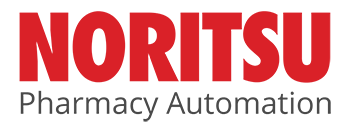The Complete Guide to Pharmacy Automation
Investing in Pharmacy Automation: When to Expect to See ROI
Choosing the Right Pharmacy Automation Vendor
Top 5 Pharmacy Automation Vendors for Long-Term Care Pharmacies
Three Cost-Saving Tips to Optimizing Your Pharmacy Automation Investment
What Pharmacy Automation Do You Actually Need?
The Power of Upgrading: Why Investing in New Pharmacy Automation Equipment Matters
How will adding automation affect your bottom line?
The utilization of pharmacy automation is increasingly being recognized as a crucial step in maximizing efficiency, reducing labor costs, and improving the quality of patient care. However, a significant investment such as this requires a well-calculated return on investment (ROI) expectation. This article aims to provide a comprehensive insight into the various factors that affect ROI on pharmacy automation, as well as the direct and indirect ways that automation impacts ROI.
Pharmacy Automation Initial Costs vs. Long-Term Savings
Initial Costs of Pharmacy Automation
Pharmacy automation involves a range of equipment like automatic dispensing cabinets and robotic prescription dispensing systems. The initial costs of pharmacy automation can range from a few thousand to several hundred thousand dollars, depending on the scale and complexity of the setup.
Potential Long-Term Savings from Pharmacy Automation
Despite the steep initial costs, the potential long-term savings from pharmacy automation systems often justify the investment. Automating your pharmacy can lead to significant labor savings, reduced waste due to expired or damaged medication, improved accuracy in dispensing. Investing in high-quality pharmacy automation equipment with a responsive vendor can also prevent downtime and lost business. When viewed over a multi-year horizon, these savings can be substantial.
Pharmacy Efficiency and Productivity Gains
Pharmacy automation offers transformative gains in pharmacy efficiency and productivity. Dispensing robots and other pharmacy automation equipment can process a larger volume of prescriptions compared to manual methods, reducing waiting times and improving the customer experience, while eliminating common manual errors and speeding up the overall pharmacy workflow. These gains in efficiency can lead to increased customer satisfaction, fostering loyalty and repeat business.
Indirect ROI Benefits of Investing in Pharmacy Automation
- Improvements in Patient Safety and Adherence: Automated dispensing and tracking increase patient safety by reducing medication errors. This, in turn, boosts medication adherence rates among patients.
- Brand Reputation and Community Trust: The enhanced level of service can foster a strong brand reputation and trust within the community, which can attract new business.
- Employee Satisfaction and Patient Care Focus: Automation relieves pharmacists and pharmacy techs from tedious tasks, allowing them to focus more on patient consultations and care, thereby increasing employee satisfaction.
- Higher Productivity in Current Space: Automation allows pharmacies to do more with their existing space, negating the need for costly expansions.
- Feature Enhancements and New Business: Advanced automated systems often come with additional features that can offer new forms of service, expanding the pharmacy’s market reach and bringing in new business.
- Sustained Business and Reduced Customer Attrition: Efficiency gains lead to faster service and reduced wait times, contributing to sustained business and a lower rate of customer attrition.
Factors That Can Influence Time to ROI on Pharmacy Automation
The ROI timeline is influenced by multiple factors, including:
- Scale of Implementation: Partial automation might yield a quicker ROI but may not offer the full range of benefits that a complete overhaul would.
- Pharmacy Size and Volume: A larger pharmacy might take longer to implement their pharmacy automation but may see more significant gains in the long term.
Ongoing Costs vs. Benefits: While there are ongoing costs for maintenance and updates, these are generally outweighed by the continuous benefits that the automated pharmacy systems provide.
Calculating ROI on Pharmacy Automation Investments
Let’s take a look at an example scenario:
A mid-sized pharmacy invested $200,000 in pharmacy automation equipment this year. With the IRS Section 179 tax deduction, they were able to deduct the full $200,000 from their taxable income for 2023, given that they were well under the $1,160,000 deduction limit and the $4,050,000 spending cap on equipment purchases. Taking an estimated tax rate of 25%, this provided a tax savings of $50,000 in the first year itself. Additionally, they could claim an 80% bonus depreciation, further reducing their tax liability. On top of that, they reported annual labor savings of $50,000 and a 20% increase in prescription volume. Factoring in the tax benefits, they expect to reach full ROI much quicker—within less than two years.
By considering tax benefits like the Section 179 deduction, pharmacies can expect a faster ROI, making the decision to invest in pharmacy automation even more compelling.
While the initial investment in pharmacy automation can be considerable, the long-term tangible and intangible benefits make it a worthwhile expense. Pharmacy automation can offer a transformative impact on efficiency, customer satisfaction, and overall business sustainability.
Pharmacies should conduct a thorough cost-benefit analysis, tailored to their specific operational needs, to assess their potential ROI on pharmacy automation investments adequately. Interested in understanding how investing in pharmacy automation could impact your pharmacy? Contact our sales team for a personalized cost-benefit analysis.






